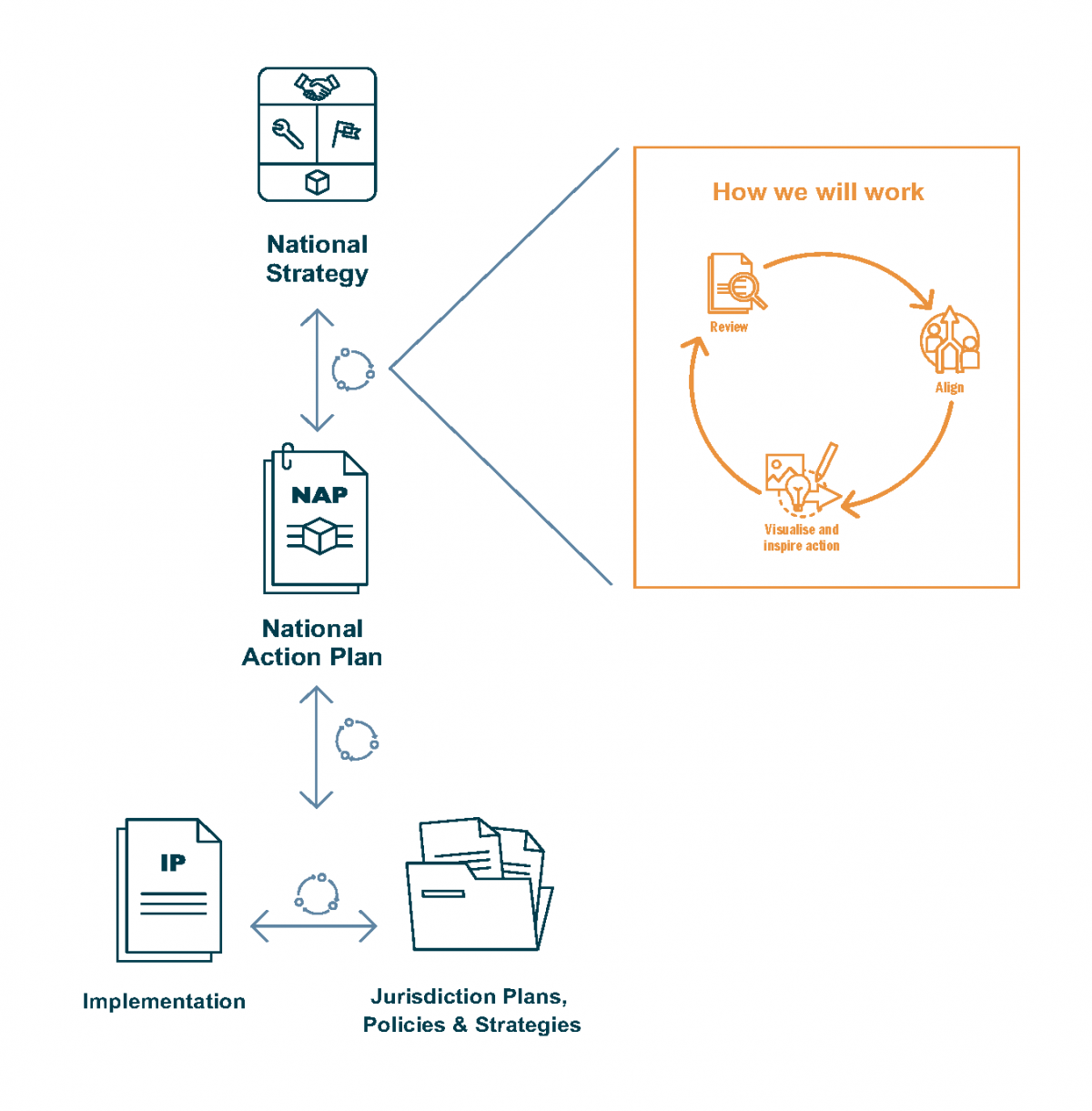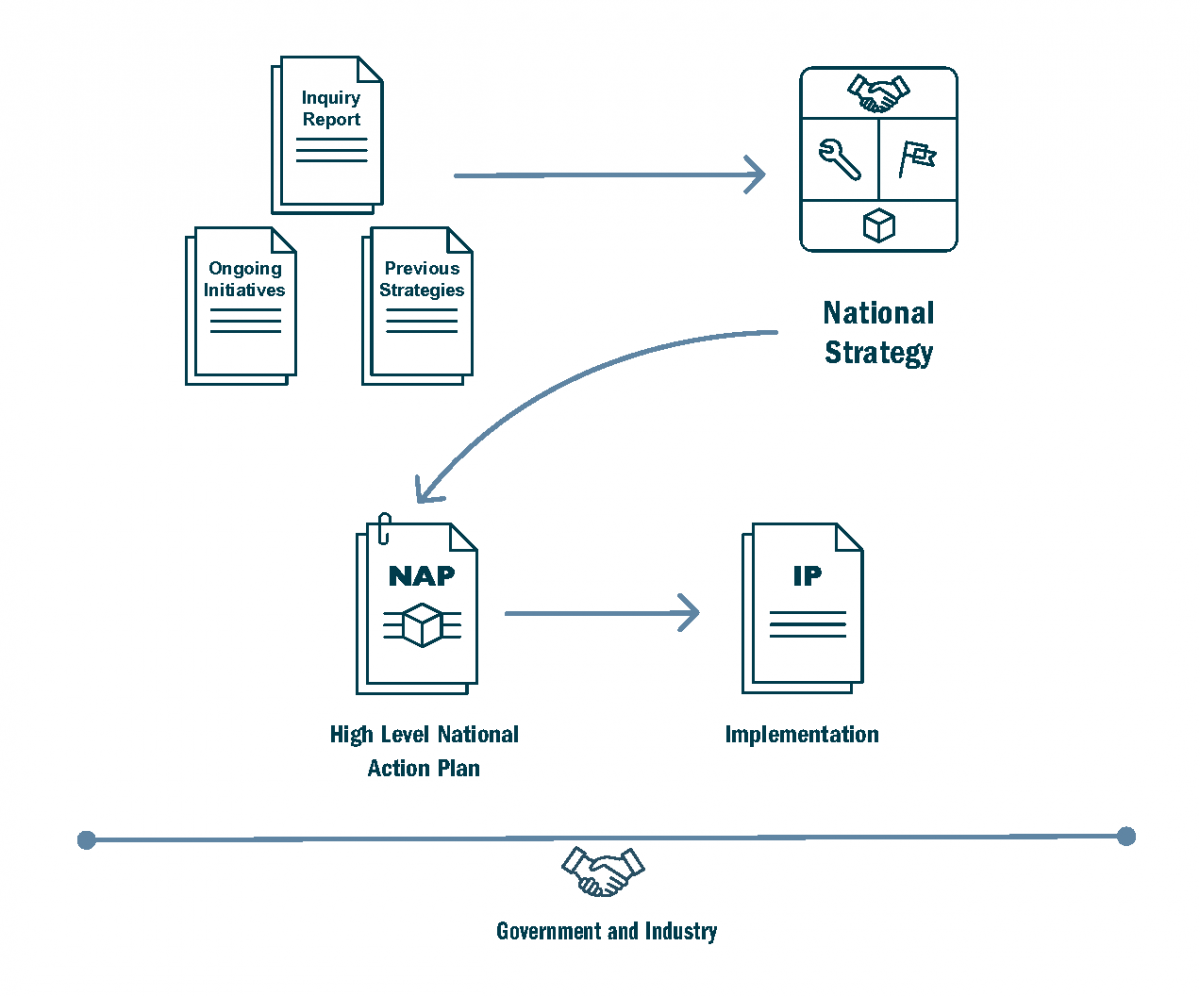How it will be delivered
We will work together
Implementing the Strategy involves a high degree of coordination and collaboration across all levels of government and active involvement of the freight industry to drive productivity and efficiency improvements in the freight sector.
The actions that governments will take to implement the Strategy are detailed in the National Action Plan. The Action Plan has been informed by priorities identified in Commonwealth, state and territory freight plans and policies. The Strategy and Action Plan form the basis of ongoing consultation with industry.
Figure 5.1: How the Strategy relates to the Action Plan, Implementation Arrangements and Jurisdiction Plans
What guiding principles do we need to commit to?
These principles will guide actions and implementation over the 20 year span of the Strategy.
National coordination
A nation-wide, collaborative, and integrated approach to freight and supply chains at all levels of government and across industry.
Evidence based actions
Supply chain activity and performance will be measured to monitor domestic and global competitiveness over time and identify areas where action is required to maintain and improve productivity.
Supporting achievement of long-term vision
Robust and targeted reform and investment to ensure Australia’s freight system and supply chains are future-ready and flexible enough to meet the long-term needs of Australian business and the community.
Responsive to emerging trends and challenges
Freight precincts have adequate capacity to handle expected future volumes, with sufficient capacity in the associated land, maritime and air connections.
Fit-for-purpose regulation
Regulation is fit-for-purpose and outcome focused to enable innovation and the adoption of more productive, efficient, environmentally sound and safe processes.
Keeping the Strategy relevant
The Strategy has a 20 year outlook and will be reviewed every five years to maintain its currency and enable action areas to be updated and new ones developed. Ongoing measurement and reporting on the freight system’s performance over time will be critical to this process.
Figure 5.2: The Strategy process
Local government has been extensively consulted in the development of the Strategy and Action Plan. For practical reasons no specific actions have been assigned to individual local councils. Input into the consolidated implementation arrangements will also indicate how local governments can be involved in implementing actions (including through local government peak bodies where applicable) and actions to be taken to support local government planning for freight more generally.
Making progress and maintaining momentum
Governments will report to the Transport and Infrastructure Council at the end of each year on their progress in delivering the Strategy and Action Plan.
The annual report will feature outcomes from the freight performance framework being established to monitor the delivery of the Strategy. It will also include input from the Australian Local Government Association and industry, who play a critical role in delivering freight outcomes. The reporting process will provide an opportunity to discuss freight performance, emerging issues and challenges for particular supply chains, modes or jurisdictions.
A major review of the Strategy and Action Plan will occur every five years in consultation with industry. These reviews will ensure continuous improvement in supply chain performance, help identify gaps in government or industry actions, and ratchet up efforts to meet Australia’s freight challenge.
Figure 5.3: Implementing the Strategy and Action Plan
Roles and responsibilities
All tiers of government and industry have a role to play in helping Australia meet its future freight needs.
Other entities, such as local governments and industry, will be consulted throughout the Strategy’s implementation, reporting and review cycles.


